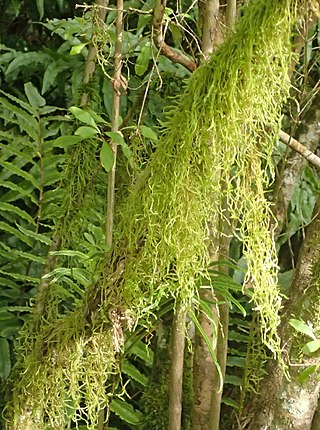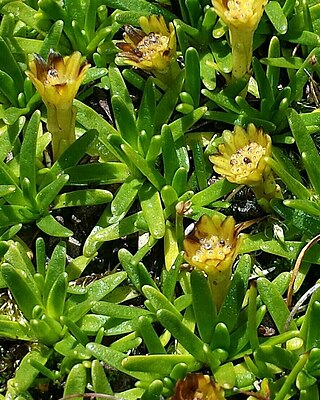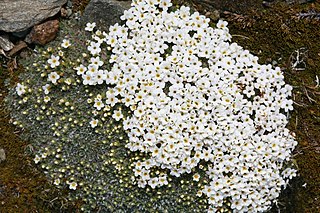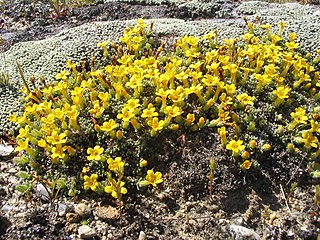
Moa are an extinct group of flightless birds formerly endemic to New Zealand. During the Late Pleistocene-Holocene, there were nine species. The two largest species, Dinornis robustus and Dinornis novaezelandiae, reached about 3.6 metres (12 ft) in height with neck outstretched, and weighed about 230 kilograms (510 lb) while the smallest, the bush moa, was around the size of a turkey. Estimates of the moa population when Polynesians settled New Zealand circa 1300 vary between 58,000 and approximately 2.5 million.

The New Zealand wrens are a family (Acanthisittidae) of tiny passerines endemic to New Zealand. They were represented by seven Holocene species in four or five genera, although only two species in two genera survive today. They are understood to form a distinct lineage within the passerines, but authorities differ on their assignment to the oscines or suboscines. More recent studies suggest that they form a third, most ancient, suborder Acanthisitti and have no living close relatives at all. They are called "wrens" because of similarities in appearance and behaviour to the true wrens (Troglodytidae) but are not members of that family.

Kōkako are two species of forest bird in the genus Callaeas which are endemic to New Zealand, the endangered North Island kōkako and the presumed extinct South Island kōkako. They are both slate-grey with wattles and have black masks. They belong to a family containing five species of New Zealand wattlebirds, the other three being two species of tieke (saddleback) and the extinct huia. Previously widespread, kōkako populations throughout New Zealand have been decimated by the predations of mammalian invasive species such as possums, stoats, cats and rats, and their range has contracted significantly. In the past this bird was called the New Zealand crow. It is not closely related to the crow, but looks like one from a distance.

The adzebills, genus Aptornis, were two closely related bird species, the North Island adzebill,, and the South Island adzebill,, of the extinct family Aptornithidae. The family was endemic to New Zealand. A tentative fossil species,, is known from the Miocene Saint Bathans fauna.

Abrotanella is a genus in the family Asteraceae, of 23 species, native to Australia, New Zealand and southern South America.

Gazania is a genus of flowering plants in the family Asteraceae, native to Southern Africa.

Abrotanella rostrata is a species of cushion plant belonging to the family Asteraceae. This tiny plant, only reaching 5 cm in height, is restricted to rocky places in the high mountains of southern South Island, New Zealand. It can be distinguished from its congeners by the combination of white florets and distinctively beaked cypselae. It flowers in December and January.

Weymouthia is a genus of two species belonging to the feather mosses. Weymouthia occurs in southern South America, New Zealand and south-eastern Australia and Lord Howe Island. It is characterised by (i) its monopodial, often hanging growth form; (ii) slight differences between stem and branch leaves; and (iii) the straight perichaetial leaves. In contrast to other genera in the Lembophyllaceae, secondary stems appear unable to arch back to the substrate and then root and form a new creeping stem.

Myosotis monroi is a species of flowering plant in the family Boraginaceae endemic to the South Island of New Zealand. The species was described by Thomas Cheeseman. Plants of this species of forget-me-not are perennial and erect, and have ebracteate inflorescences with cream or white corollas.

Abrotanella rosulata is a plant in the family Asteraceae, endemic to the Campbell Islands.

Abrotanella forsteroides, commonly known as the Tasmanian cushion plant, is an angiosperm endemic to Tasmania, Australia. The plant is a dicot species in the daisy family Asteraceae and can be identified by its bright green and compact cushion like appearance.

Abrotanella nivigena is a member of the daisy family and ranges from southeast New South Wales to eastern Victoria, Australia, growing in the Kosciuszko region. It is a cushion plant growing from 3 to 5 cm tall.

Abrotanella scapigera is an endemic angiosperm of Tasmania, Australia. It is a member of the family Asteraceae, commonly found in alpine regions of northwest and south-central Tasmania. This species is named after its characteristic sparsely leaved flowering stem that distinguishes it from the other 18 species of the Genus.

Myosotis pulvinaris or the Cushion Forget-Me-Not is a species of flowering plant in the family Boraginaceae, endemic to the South Island of New Zealand. Joseph Dalton Hooker described the species in 1867. Plants of this species of forget-me-not are perennial with a prostrate, compact, cushion habit, short bracteate inflorescences, and white corollas.

Myosotis uniflora is a species of flowering plant in the family Boraginaceae, endemic to the South Island of New Zealand. Joseph Dalton Hooker described the species in 1867. Plants of this species of forget-me-not are perennial with a prostrate, compact, cushion or mat habit, short bracteate inflorescences, and cream to yellow corollas.

Myosotis rakiura is a species of flowering plant in the family Boraginaceae, endemic to southern South Island and Stewart Island/Rakiura of New Zealand. Joseph Beattie Armstrong described the species in 1881. Plants of this species of forget-me-not are perennial rosettes which form loose tufts or clumps, with ebracteate, erect inflorescences, and white corollas with exserted stamens.

Myosotis goyenii is a species of flowering plant in the family Boraginaceae, endemic to the South Island of New Zealand. Donald Petrie described the species in 1891. Plants of this species of forget-me-not are perennial rosettes which form loose tufts or clumps, with ebracteate, erect inflorescences, and white corollas with partly exserted or fully included stamens.

Plantago unibracteata is a species of flowering plant in the family Plantaginaceae that is endemic to New Zealand. Knud Rahn gave the species its current name in 1996, based on Joseph Dalton Hooker's original description in 1854. Plants of this species of plantain are perennial with a rosette habit, with narrowly angular-ovate leaves with few teeth, and numerous angular or rounded seeds.

Ourisia caespitosa, or creeping mountain foxglove, is a species of flowering plant in the family Plantaginaceae that is endemic to New Zealand. Joseph Dalton Hooker described O. caespitosa in 1853. Plants of this species of New Zealand foxglove are perennial herbs that are mostly glabrous (hairless), with trilobed or irregularly notched leaves that are tightly packed along a creeping stem. It is listed as Not Threatened.

Ourisia glandulosa or is a species of flowering plant in the family Plantaginaceae that is endemic to high-elevations in the southern South Island of New Zealand. Joseph Dalton Hooker described O. glandulosa in 1864. Plants of this species of New Zealand mountain foxglove are perennial, small-leaved herbs that have tightly packed, opposite, smooth or irregularly notched leaves, and flowers single or in pairs in each node. The corolla tube is glabrous and yellow inside. It is listed as Not Threatened.



















